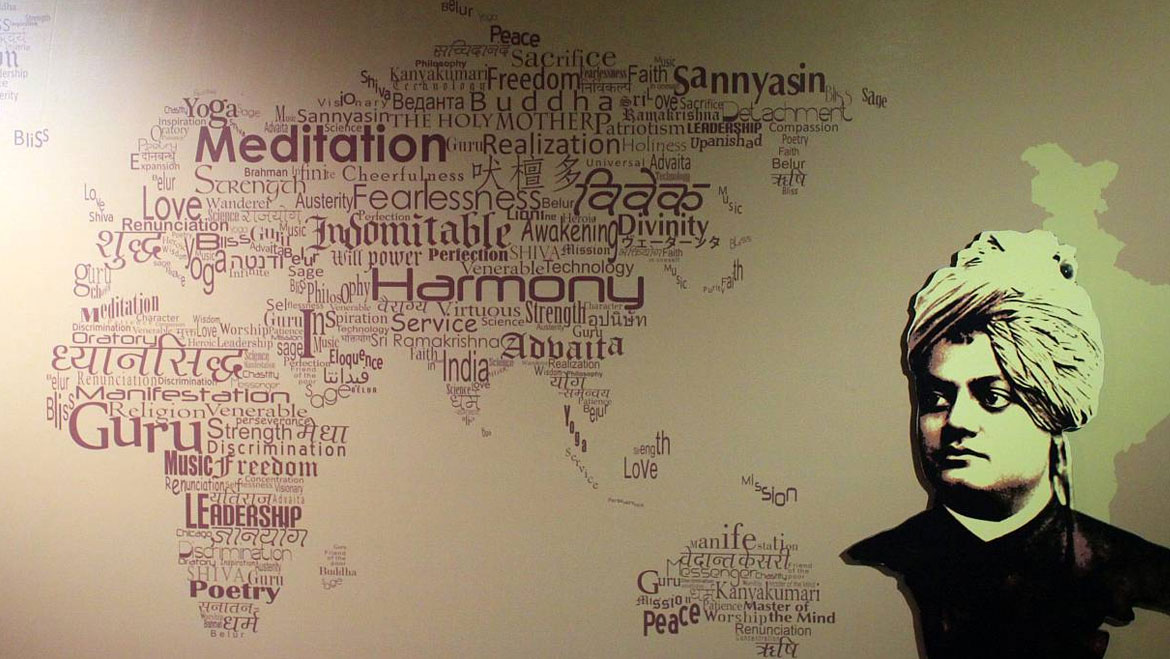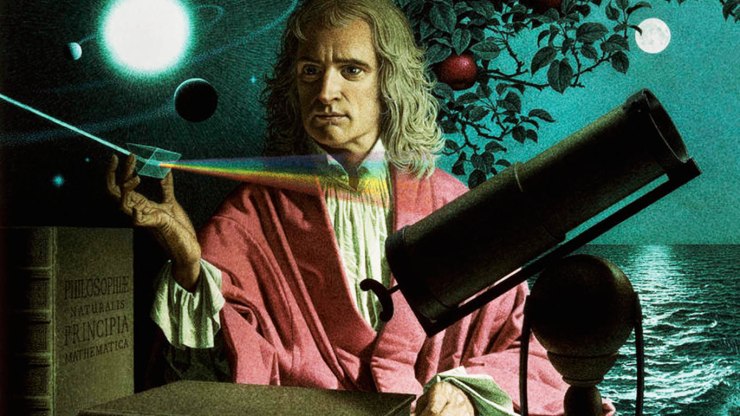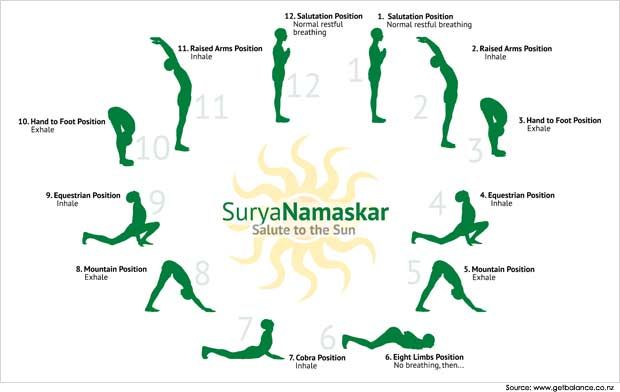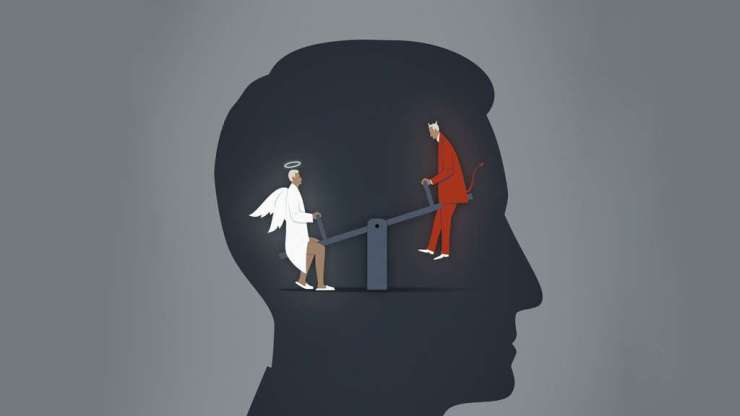
“Pleasure is not a goal of mankind.
The goal of mankind is knowledge and wisdom.”
Swami Vivekananda
This spiritual post is about someone so special that he is called “Prince among men, a man in a million”, who is revered in a way no one else is in today’s India. His influence in his days was so profound that those who met him were instantly captivated by his magnetic and complex personality, his vast knowledge of virtually anything and everything, his wisdom, his ability to speak on any subject without preparation and anywhere, and his legendary, unique memory. He was one of the greatest thinkers of all time, and to get the right perspective and to be able to write about him, I studied all 8 volumes of his work and was greatly impressed by his ideas, his thoughts, and his passionate beliefs. I have already dedicated three lengthy posts to Swamiji’s life and works; today I would like to write more about his philosophy. His legacy will live on because being as familiar with science and logic as with Advaita’s philosophy, he was able to reconnect arguments on both sides. He is recognised in India as one of its greatest sons who virtually conquered the two western continents with his Vedanta movement. There are monuments devoted to his memory in India as well as in other countries, as well as stamps.

I would like to remind readers that everything you read in Swamiji’s extracts was never written down before he made it as a speech; it was only after his stenographer, J.J. Goodwin, noted it all and then typed it that the Works of Swami Vivekananda were created for posterity. As speakers don’t deliver their words the way they would if they were pre-written, when we read them now, it is good to bear this in mind if puzzled by the style and some repetition.
Just to put you in the right mood, here is the mantra Hari Om Tat Sat to get your toes tapping while you read the post:

Swamiji’s performance at the Parliament of Religions made him famous worldwide. Swamiji wrote that the billions of people on the earth could be classified into four basic types:
Those who were in constant activity; workers.
Those who were driven by their inner urge to achieve something in life; lovers of God.
Those who tended to analyse the working of their minds, and work with their minds; mystics.
Those who weighed everything with reason; philosophers.
He found that each of the four different forms of Yoga of the Vedantic Vision of Universal Religion could help each of these four kinds of people. Although one of these individual types is dominant in a person, the other types also have an impact made by their actions on others and “to the active worker it is the union between individuals and humanity as such; to the lover, the union between himself and the God of love; to the mystic, between his lower “self” and higher “self”; and to the philosopher, it is the union of all existence. Swamiji recommended Karma Yoga for the worker, Bhakti Yoga for the lover, Raja Yoga for the mystic, and Gyan Yoga for the philosopher.

KARMA YOGA
The word Karma is derived from the Sanskrit “kri” to do. All action is karma, and technically this word also encompasses the effects of actions. But Karma Yoga deals only with karma as work, without its effects. According to Eastern philosophy, the goal of mankind is knowledge and wisdom, and miseries are caused when men foolishly strive to attain pleasure instead. Pleasure and pain are good teachers, and so are good and evil, and all of these go to build the character of a man. Knowledge is inherent in man, and learning is discovering or unveiling the cover of one’s own soul, which is a mine of infinite knowledge.

The external world is simply the suggestion that sets one to study one’s mind for itself. The falling of an apple gave the suggestion to Newton, and he studied his own mind; he rearranged all the previous links of thought in his mind and discovered a new link among them, which he termed as gravity. Like fire in the flint, knowledge exists in the mind; a suggestion is friction to ignite it. In many cases, knowledge is not discovered, and different stages of learning depend on the advancement in the process of discovering one’s “learning”. The man who is unable to lift the veil and discover is an ignorant man, the man who has been able to lift it to a certain degree is knowledgeable, and the man who has removed the veil totally is all-knowing, omniscient.

Every mental and physical perception by the mind leading to the discovery of some or other knowledge is karma. Everything we do, whether physical or mental, is karma, and it leaves its mark on us. The effect of karma on one’s character is the most tremendous power that man has to deal with. Great occasions rouse even the lowest of human beings to some kind of greatness, but a really great man continues doing even the most common actions in the same way always and wherever he may be. Our karma determines what we deserve and what we can assimilate. We are responsible for what we are, and we have the power to make ourselves whatever we wish to be. If what we are now has been the result of our own past actions, it certainly follows that whatever we wish to be in the future can be produced by our present actions, and Karma Yoga shows us how to act now to achieve what we want to be.

The Gita describes Karma Yoga as doing work with cleverness and scientifically to bring out the inherent power of the mind, and to awaken the soul. Intense activity is necessary and one must continue working. The ideal man is he who, in the midst of the greatest silence and solitude finds intense activity, and in the midst of that activity finds the silence and solitude of the desert. Such a man has learned the secret of restraint; he has established himself as an ideal Karma Yogi.

Different people work with different motives – some work for fame, some for money, some for power, and some want to go to heaven. But there are few exceptions, those who work for work’s sake, those who do not care for name or fame or even to go to heaven, and it is from amongst such characters that Christ or Buddha are made. One has to start at the beginning, take up different works as they come to him, and slowly make himself more unselfish with every passing day, and gradually this selfishness will melt with perseverance, and at last, we will reach a time when we will be able to do work without any selfish motive. The moment we attain this stage, all our powers will be concentrated, and the knowledge which is ours will manifest.

BHAKTI YOGA
Bhakti is the intense love of God, and Bhakti Yoga is search of God, beginning, continuing, and ending in love. When a man is in the true love of God, he loves all, hates none, and is always satisfied. This love is beyond worldly desires and is often the cause of the denunciation of everything else. However, the weak and undeveloped minds of the worshippers on the lower strata of Bhakti are often carried away by their own ideals only and shut themselves off from other ideals which may lead to fanaticism. This sort of Bhakti can be compared to the canine instinct of guarding the master’s property against intrusions but unlike the fanatics, the dog at least never mistakes his master for an enemy.

Bhakti is a succession of mental efforts at religious realisation, beginning with ordinary worship, and ending in a supreme intensity of love of Ishwar, from whom is the birth, continuation, and dissolution of the universe; the Eternal, the pure, the Ever-free, the Almighty, the All-knowing, the All-merciful, the Teacher of all teachers. Swamiji stressed that like the bird flying to its destination with the help of its two wings and steering through by its tail, love of God can be attained through Gyan or knowledge, and Bhakti or devotion, with Yoga maintaining the balance between the two. Neither Bhakti nor Gyan can achieve alone the desired goal.

Bhakti Yoga is divided into two forms – the Gauna, also known as Apara, meaning preparatory, and the Para, or the supreme. In the preparatory stage, the mythological and symbolic aspects of religion help the aspiring soul to become God-ward. This form of Bhakti can, at the most, bring about only the so-called spirit of reforms amongst its practitioners to whom enjoyment of their lives is the only purpose of human existence and the bhakti is engrossed in his Bhakti alone and considers all other forms irrelevant. “Every soul is destined to be perfect, and every being in the end, will attain the state of perfection. Whatever we are now is the result of our acts and thoughts in the past, and whatever we shall be in the future will be the result of what we think and do now.” The guru, or the teacher, from whose soul the impulse comes, hastens the higher powers and possibilities.

The soul awakens the spiritual life, nurtures the growth of the shishya, or the disciple so that he may become holy and perfect in the end. Whereas the guru must possess the power to transmit that impulse, the shishya must also be fit to receive it, and then only will the spiritual awakening succeed. A true religious teacher should have a pure soul and possess the knowledge of the spirit of the scriptures more than the mere words of the scriptures and should be teaching without any motive and out of love alone. The shishya on the other hand should be pure of heart and have a real thirst for knowledge. He should also have perseverance and love and venerate his teacher.

Purity, strength, control of one’s passions, and discrimination are some of the essentials of Bhakti Yoga. Truthfulness, sincerity, doing good for others without any gain to oneself, and ahimsa or not injuring others by thought, word, or deed – are some ingredients of purity. The Bhakti Yoga must have both mental and physical strength and be sound in both. Repeating God’s name, and following the rituals and symbols are part of the preparatory form of Bhakti Yoga. But a Yogi who wants to tread on the path of the supreme form of this Yoga will have to renounce the world, and immerse himself completely in the love of God. However, this renunciation comes naturally to the Bhakti out of his intense love of God. Bhakti Yoga doesn’t say ‘give up’, it only says, ‘love, love, love the Highest’, and thus it leads to spiritual bliss. ‘It makes the heart fill with the divine waters of the ocean of love, that is God Himself, and leaves no place there for love of anything else.’

RAJA YOGA
Raja Yoga is the science that evolved through the analysis of the study, investigation, and generalisation of the religious faculties of man in its entirety. Raja Yoga does not deny the existence of unexplained facts, rather asserts that miracles and answers to prayers do not become comprehensible through superstitious explanations or by attributing them to supernatural beings. It declares that each individual is only a carrier for the infinite ocean of knowledge and power that lies behind mankind. It teaches that wherever and whenever a desire, a want, or a prayer has been fulfilled, it has been done so from a supply of that knowledge and not from any supernatural. The Raja Yoga stresses that there are two types of manifestations – the obvious and the subtle. The subtle are the causes, and the obvious, the effects; and while it is easy to perceive the obvious, it is not so with the subtle.

The sutras or aphorisms of Patanjali are the highest texts of Raja Yoga and it considers each soul as being potentially divine, setting its own goal for manifesting this divinity. Knowledge is based on experience, and thus it is easy to find the truth propounded by the exact sciences. The same cannot be said of religion, which is based on faith and belief. There is also an underlying universal belief – cutting across the different theories and the varying ideas of different sects in different countries – that is based on universal experiences of the heads of the different religions. These fountainheads or original teachers saw God, their inner soul, and eternity, and preached thus. It is possible to perceive that same experience through the practice of Raja Yoga.

The science of Raja Yoga puts forward a practical and scientifically worked out method to perceive this truth. Raja Yoga uses the instrument of mind both to ‘see within’, and to ‘see beyond.’ One needs to turn the mind inside, concentrate all its powers, and direct the mind to analyse itself. It is a very difficult proposition but is the only way to attain the knowledge of the eternity of the soul, which will help then help remove all miseries and bring about perfect bliss. Every human being has the right to ask the reason or the ‘why’ of everything, and Raja Yoga teaches him to answer that question himself. A part of this practice is physical but the main part is mental. The mind and the body are intricately connected, and the health of one depends on the health of the other. Thus, a healthy body is the abode of a healthy mind.

According to Raja Yoga, the person who learns to control the internal forces can control the external ones too and can be oblivious to nature’s laws. The progress and civilisation of the human race depend on controlling this nature. This form of Yoga was discovered 4,000 years ago in India. Swamiji brought out Raja Yoga and while he explained aphorisms that he could, the others he narrated from the books. He explained the Sankhya philosophy – on which Raja Yoga is based, and I relayed this above.

GYANA YOGA
Gyana Yoga is for rational people and its mantra is “Om Tat Sat”, implying that knowing Om is knowing the secret of the universe. The Gyana Yogi strives to realise God by the power of pure reason and through the realisation of self. The real ‘I’ is the external subject matter of knowledge, and could thus never be its object. It is beyond birth, death, fear, sense, and thought. However, since knowledge cannot be had of the Absolute but only of the related, man can thus theoretically realise himself as Brahma in this world itself. The Vedas constantly indicate the oneness of man with God, but few can penetrate the veil and may realise the truth.
The Gyana Yogi has to renounce fear and believe in nothing until he actually ‘knows it’. He has to rid himself of his body, mind, and thought and be content to know that he is only the atman or self. The Yogi in search of this atman, or self, must fearlessly follow his reason to its farthest limits. The real ‘I’ is eternal and infinite, but layers of ignorance shields it from us. The Sanskrit term Vedanta means the anta, or the conclusion of the Vedas – the earliest sacred literature of India – and it teaches us that Brahma alone is true and all else is maya, or illusion. This is also known as Advaitism, or without the dualism of good and evil, pleasure and pain, joy and sorrow; for Brahma, being perfect and the infinite Truth, is independent of all conditions of duality.
Brahma preaching to the sages

Although Brahma is One, yet in the relative plane, due to name and form, he appears to us as many. Just like earth is the real essence of the world, so is Brahma the true essence of all living beings. Vedanta proclaims that there is but one Being, and it manifests itself in full in every soul and not that the soul is only a part of Being. The truth about the soul is to be heard first. Once one has heard it, one must think about it, and once one has thought of it, one must meditate upon it by continuously telling oneself: “I am He, I am He.”
This is Gyana Yoga, the knowledge of God.

I highlighted the important points of Swamiji’s philosophy, but it isn’t possible to cover all the issues that he wrote about in 8 volumes, and so here are a few extracts you will find interesting:
“The intellect is not the way to solve the problem of misery, but through the heart. If all this vast amount of effort had been spent in making man purer, gentler, more forbearing, this world would have a thousand-fold more happiness than it has today. Always cultivate the heart; through the heart, the Lord speaks, and through the intellect you yourself speak.

You remember in the Old Testament where Moses was told, ‘Take off thy shoes off thy feet, for the place whereon thou standest is holy ground.’ We must always approach a study of religion with that reverent attitude. He who comes with a pure heart and a reverent attitude, his heart will be opened; the doors will open for him, and he will see the truth.
If you come with intellect only, you can have a little intellectual gymnastics, intellectual theories, but not truth. Truth has such a face that anyone who sees that face becomes convinced. The sun does not require any torch to show it; the sun is self-effulgent. If truth requires evidence, what will evidence that evidence? If something is necessary as witness for truth, where is the witness for that witness? We must approach religion with reverence and with love, and our heart will stand up and say, this is truth, and this is untruth.”

“The field of religion is beyond our senses, beyond even our consciousness. We cannot sense God. Nobody has seen God with his eyes or ever will see; nobody has God in his consciousness. I am not conscious of God, nor you, nor anybody. Where is God? Where is the field of religion? It is beyond the senses, beyond consciousness. Consciousness is only one of the many planes in which we work; you will have to transcend the field of consciousness, to go beyond the senses, approach near and near to your own centre, and as you do that, you will approach nearer and nearer to God. What is the proof of God? Direct perception, Pratyaksha. The proof of this wall is that I perceive it. God has been perceived that way by thousands, and will be perceived by all who want to perceive Him. But this perception is no sense-perception at all; it is supersensuous, superconscious, and all this training is needed to take us beyond the senses.

By means of all sorts of past work and bondage, we are being dragged downwards; this preparation will make us pure and light. The bondages will fall off by themselves, and we shall be buoyed up beyond this plane of self-perception to which we are tied down, and then we shall see, and hear, and feel things which men in the three ordinary states (vis. waking, dream and sleep ) neither feel, nor see, nor hear. Then we shall speak a strange language, as it were and the world will not understand us, because it does not know anything but senses. True religion is entirely transcendental. Every being that is in the universe has the potentiality of transcending the senses; even the little will one day transcend the senses and reach God. No life will be failure, there is no such thing as failure in the universe. A hundred times man will hurt himself, a thousand times he will tumble, but in the end he will realise that he is God. We know there is no progress in a straight line. Every soul moves, as it were, in a circle, and will have to complete it, and no soul can go so low but there will come a time when it will have to go upwards. No one will be lost. We are all projected from one common centre, which is God. The highest, as well as the lowest life, ever projected, will come back to the Father of all lives. “From whom all beings are projected, in whom all live, and unto whom they all return; that is God.”
“After so much Tapasya, I have understood
this as the highest truth: There is no other
God besides that. He who serves all beings
serves God indeed.”

“And now after a year’s experience of American homes, of American women, how utterly false and erroneous that sort of judgment appears! American women! A hundred lives would not be sufficient to pay my deep debt of gratitude to you! I have not words enough to express my gratitude to you. “The Oriental hyperbole” alone expresses the debt of Oriental gratitude – “If the Indian Ocean were an inkstand, the highest mountain of the Himalaya the pen, the earth the scroll and time itself the writer”* still it will not express my gratitude to you!

Last year I came to this country in summer, a wandering preacher of a far distant country, without name, fame, wealth, or learning to recommend me – friendless, helpless almost in a state of destitution – and American women befriended me, gave me shelter and food, took me to their homes and treated me as their own, their own brother. They stood my friends even when their own priests were trying to persuade to give up the “dangerous heathen” – when day after day their best friends had told them not to stand by this ‘unknown foreigner, maybe, of dangerous character’. But they are better judges of character and soul – for it is the pure mirror that catches the reflection.
Swami travelled extensively in California and his presence in Los Angeles made a lasting impression. Among the devotees, he met and stayed with were the Mead sisters. One of them, Carrie Mead Wyckoff, affectionately known as Sister Lalita, was forever changed by her encounter with Vivekananda.
Swami at the home of Mrs Wyckoff at 309 Monterey Road, South Pasadena, and the house as it is today


And how many beautiful homes I have seen, how many mothers whose purity of character, whose unselfish love for their children is beyond expression, how many daughters and pure maidens, ‘pure as the icicle on Diana’s temple’, and withal with much culture, education, and spirituality in the highest sense! Is America then full of only wingless angels in the shape of women? There is good and bad everywhere, true – but a nation is not to be judged by its weaklings called the wicked, as they are only the weeds which lag behind, but by the good, the noble, and the pure who indicate the national life-current to be flowing clear and vigorous.

Do you judge an apple tree and the taste of its fruits by the unripe, undeveloped, worm-eaten ones that strew the ground, large even though their number be sometimes? If there is one ripe developed fruit, that one could indicate the powers, the possibility, and the purpose of the apple tree and not hundreds that could not grow. And then the modern American women – I admire their broad and liberal minds. I have seen many liberal and broad-minded men too in this country, some even in the narrowest churches, but here is the difference – there is danger with the men to become broad at the cost of religion, at the cost of spirituality – women broaden out of sympathy to everything that is good everywhere, without losing a bit of their own religion. They intuitively know that it is a question of positivity and not negativity, a question of addition and not subtraction. They are every day becoming aware of the fact that it is the affirmative and positive side of everything that shall be stored up, and that this very act of accumulating the affirmative and positive, and therefore soul-building forces of nature, is what destroys the negative and destructive elements in the world.”
This extract is from Swamiji’s private letter sent from England, and it shows how to write interestingly, even in casual correspondence:
“Objective society will always be a mixture of good and evil – objective life will always be followed by its shadow, death, the longer the life, the longer will also be the shadow. It is only when the sun is on our own head that there is no shadow. When God and good and everything else is in us, there is no evil. In objective life, however, every bullet has its billet – evil goes with every good as its shadow. Every improvement is coupled with an equal degradation. The reason being that good and evil are not two things but one, the difference being only in manifestation of – one of degree, not kind.
Our lives depend upon the death of others – plants or animals or bacilli! The other great mistake we often make is that good is taken as an ever-increasing item, whilst evil is fixed quantity. From this, it is argued that evil being diminished every day, there will come a time when good alone will remain. The fallacy lies in the assumption of a false premise. If good is increasing, so is evil. “

“The whole truth about austerities and spiritual exercises is, in a nutshell, that I am pure and all the rest are impure! A beastly, demonic, hellish religion this! There are big monasteries in every village where sumptuous dinners are given, supplemented by presents in cash… There is no harm in touching the non-Brahmin classes when it serves one’s purpose; and when you have done with it, you bathe, for non-Brahmins are as a class unholy and must never be touched on other occasions! Monks and Sannyasins and Brahmins of a certain type have thrown the country into ruin. Intent all the while on theft and wickedness, these pose as preachers of religion! They will take gifts from the people and at the same time cry, “Don’t touch me !” And what great things they have been doing!…”If a potato happens to touch brinjal, how long will the universe last before it is deluged?” “If they do not apply earth a dozen times to clean their hands, will fourteen generations of ancestors go to hell, or twenty-four?” – For intricate problems like these they have been finding out scientific explanations for the last two thousand years – while one-fourth of the people are starving. And if anyone protests against it, the plea is put forward, “Our religion is being overturned.” What I mean by mentioning all this is that there were many good things in ancient times, but there were bad things too. The good things are to be retained, but India that is to be, future India must be much greater than ancient India. If there is inequality in nature, still there must be an equal chance for all – or if greater for some and for some less – the weaker should be given more chance than the strong. And you are the agents to bring about this Golden Age.
To work with this conviction of heart!”

Swamiji’s legacy is enormous, with centres of Hinduism in most Western countries, several monasteries in India, and temples all over the world. With each year of rapid modernisation, transformation, intolerance, and anxiety, Swamiji Vivekananda’s life and thoughts assume more meaning and importance. His message of tolerance and equality makes him an exemplary spokesperson of his country, India, and his life’s mission of creating an order of monks who dedicated their lives to others, makes him a prophet and a leader. His teachings continue to be relevant today and his inspiring life reflects the soul of the Empire of the Spirit, India.

Thank you again.
Joanna
LikeLiked by 2 people
Thank you 😀👍
LikeLiked by 1 person
Dear Loku, I have to apologise profusely, firstly, because I was disappointed not to see your review, although you told me you have done it, and as you write such a detailed one, and I wanted to read it. I don’t know how, but your last week’s comments and KK’s this week’s comments end up in spam. Only when tonight, now, I had the time to delete over 50 spam I found, to my horror, yours and KK there. KK noticed that his was missing and posted his comments again, but you must have thought me very rude and unfriendly.
Luckily, all is clear now. I learned a lesson – if in doubt, ask questions! I will do this in the future.
Your review is simply magnificent and I thank you from the bottom of my heart!!
I am so glad that you admire Swamiji because I do think that he was a unique Genius and exceptionally good man.
You asked about “Raj” Yoga, but it was “Raja Yoga”, and it is about analysing sciences. The rest of the explanation is in that section.
Thank you, Loku, and I hope I can see more of your brilliant reviews, please.
Joanna
LikeLiked by 2 people
I reply at lenght and it all disappeared! Just wanted to apologise profusely for not thanking you for your magnificent review but your comments were hidden in the spam!! Only tonight, I had the time to delete over50 spam items, and to my horror, your comments were there. Thank you very much for writing such an analytical, interesting and uplifting review from the corner of my heart!.
You asked about “Raj”, it is “Raja Yoga”, devoted to analysing sciences, among other things.
Thank you, Loku, I do hope I will read more of your wonderful reviews, please.
Joanna
LikeLiked by 1 person
Thank you again!!
Joanna
LikeLiked by 2 people
Well, I was not aware of the fact that my comment went right into the spam folder. Many bloggers apologised to me for the same.
Thank you.
LikeLiked by 1 person
So, “ Raja Yoga” is all about developing a scientific perspective and scientific method to understand a topic logically.
LikeLiked by 1 person
In a nutshell, yes, Loku.
Joanna
LikeLiked by 2 people
Thank you.
Joanna
LikeLiked by 2 people
Thank you, I am glad it is all back to normal!
Joanna
LikeLiked by 2 people
Have a nice Sunday.
LikeLiked by 1 person
I’d have to verify with you here. Which isn’t something I often do! I take pleasure in reading a submit that will make people think. Also, thanks for allowing me to comment!
LikeLike
Thank you, Malik, I am pleased that you like my writing, and I do hope you will read some more. I publish now Friday night because WordPress doesn’t recognise the time change in England to Summe Time.
Joanna
LikeLike
Thank you again.
Joanna
LikeLike
Yes, its true, Swamiji life & message has got the power of transformation.
LikeLike
Thank you for your lovely comment about Swamiji, my GURU, AND Hero.
Joanna
LikeLiked by 1 person
thank you again, greatly appreciated.
Joanna
LikeLike
I love the quote by Swami Vivekananda at the opening of your post Joanna. 🤗 You have certainly written some painstaking, detailed information about the life of Vivekananda. I love your passion about sharing his intellect, spirituality, and morality. Thank you! 🥰🙏🏼😍
LikeLike
Thank you, Kym, for your generous comments! I admire his intellect and his goodness, and writing about his philosophy was a must!
Joanna
LikeLiked by 1 person
Oh gosh Joanna, I can see that through your essay and feel it in how you write so passionately about him. Bravo my dear. Great job! 🤗💖🥰
LikeLike
Thank you, Kym!
Joanna xx
LikeLiked by 1 person
My pleasure always my friend. Cheers! 💞✨💖
LikeLike
Blessings to you, Kym!
LikeLiked by 1 person
🤗🙏🏼😊
LikeLike
From where did you get all these pictures?
LikeLike
Joanna, This was a beautiful post! Amazing how spiritual he was, I can better understand why he moved so many people. Your detailed message and love for his teachings shines through. The photos help build the visual side of the story. Enjoyed all the photos and the one where it shows the yoga poses, Salute to the Sun, was interesting. THANK YOU for taking the time to share this with us. 💕
LikeLike
Thank you, Monica, for such a wonderful comments! Reading Swamiji’s words, immortalised by his stenographer, won me over too! I am so glad that you enjoyed
the spiritual side, but also other aspect of Swamiji’s character, such as gratitude when he wrote a long thank you to American women who befriended him before he was famous.
Thank you, Monica again, your words are greatly appreciated.
Joanna x
LikeLiked by 1 person
I think, Arnab, that you should comment on the post, not just inquire about the source of presentation.
Joanna
LikeLike
I’m not going to lie to you Joanna, I found a lot of the information about yoga beyond my comprehension. I’m neither a believer nor disbeliever of these sorts of philosophies, it’s just that I don’t follow ideologies of any description – not religion, cult beliefs or even modern day unproven theories. That said, I still believe that I’m a spiritual person who knows right from wrong, but the truth is, that unlike Swami Vivekananda, I’m a mere mortal with a multitude of idiosyncrasies. Your posts about him have been enlightening to say the least, and only a special person like yourself could attempt to explain the thinking of such a great mind. You have an exceptional gift of being able to understand such complex issues, and I’m just sorry that I don’t have the same ability. I Hope you can understand me like you understand Swami 😊
LikeLike
Thank you, Malc, for such wonderful comments! Of course, I understand your stand, but philosophy or religion apart, what is proven beyond any doubt is that practicing yoga for your health will give you flexibility that will last you a lifetime, and prevent old age immobility. This is the point to focus on, and also another important aspect worthy of our following is Swamiji’s example of the importance of gratitude when he wrote a long thank you to American women who befriended him before he was famous. To me, gratitude is the mother of all virtues, and I will never forget how you lifted my spirit by sending me the song with the birds chirping, and a cat looking just like my Felicity playing about. It made my day!
Having the benefit of all of Swamiji’s 8 books gave me the knowledge of what is essential to lead a life well lived.
Thank you, Malc, again, and your views are greatly appreciated.
Joanna
LikeLiked by 1 person
You’re absolutely right of course about yoga improving our physical health, and no doubt our mental health as well. Unfortunately, I was a lost cause years ago, but I certainly think it’s something worth doing if you can.
His gratitude towards the American women didn’t go unnoticed and it doesn’t matter where we fit in to society it costs nothing to be polite and grateful. I for one am grateful that I came across your blogs because you have enlightened me so much. Thank you Joanna.
LikeLike
Thank you, Malc, for your delightful reply! I wish I had a chance to start yoga as a child or even later but I had to work, and so now I am just encouraging others. As always, Malc, you are kindness personified, and I can only humbly thank you, as I always learn from you so much.
Joanna
LikeLiked by 1 person
Thanks for your reply too Joanna. Keep being the lovely person that you are and if that’s what yoga does, then maybe I should have taken it up as well 🙂
LikeLike
Namaste.
Joanna
LikeLiked by 1 person
🙏
LikeLike
Thank you, Joanna, for this beautifully crafted post on Swami Vivekananda, who was at ease with Science, logic and philosophy at the same time. His classification of people in four types relating with four types of yoga- Karma, Bhakti, Raja and Jnana are unique, but very logical, if we go into detail. In this regard, your energetic audio on Hari Om Tat Sat’ mantra meaning ‘That is Truth’, is wonderful. I really enjoyed the music once again while reading this post. I also liked the circular picture of Surya Namaskar (Sun Salutation) that I feel is the complete exercise in itself.
I commend you for going so deep into Swamiji’s works and words and understanding the complex points of his philosophy of life and then presenting it in easy to understand language.
Somewhere you have mentioned Swamiji saying, “Always cultivate the heart, through which the Lord speaks”. It’s so relevant. His words of gratitude for American women touched my heart.
One thing I have always admired about him was his vision that India of the future must be greater than the India of the past. I think his thoughts and ideas are more relevant now. Thanks again Joanna for taking us closer to Swamiji through these four posts of yours.
LikeLike
I cannot thank you enough, Kaushal, for your analytical comments!
Everything you appraise about
Swami Ji is worth remembering as you have a gift of bringing up the most important issues to the fore.
My love, reverence, and respect for
this giant of a thinker will stay with me forever.
Thank you, Kaushal, again, and your priceless words are greatly appreciated.
Joanna
LikeLiked by 1 person
It’s my pleasure, Joanna! You’re welcome!
LikeLike
Thank you, Debasis, for re-blogging my 4 posts biography of the great Indian thinker Swami Vivekananda. Greatly appreciated!
Joanna
LikeLike
Another beautiful narration on the spiritual teachings of the highly revered Swami Vivekanandji!Any amount of praise will fall short for sharing the life the great Swami!Thanks for your enlightening post, Joanna!
LikeLike
Thank you, Dhirendra, for your kind comment! Greatly appreciated.
Joanna
LikeLiked by 1 person
My pleasure 🙏
LikeLike
You are welcome!
Joanna
LikeLiked by 1 person
I love your posts because, not only do I get to learn so much, but your passion for Swami Vivekananda clearly shone through. At times, this philosophy does admittedly go a little over my head, but I love that quote at the beginning and how much positive change his philosophy inspires.
LikeLike
Thank you for your wonderful comments! The main thing to focus on is that practicing yoga is beneficial physically and mentally, and that Swamiji encouraged gratitude as the mother of all virtues. And yes, I understand and love his philosophy, and writing about him is a great pleasure.
I am glad that you are back.
Joanna
LikeLiked by 1 person
This was a masterclass in Swamiji. I learned a lot (and have so much more that could be learned). Thank you for taking the time to lay it all out in such a clear manner.
LikeLike
Thank you, Pat, for your generous comments! No doubt, Swamiji would appreciate your words, as indeed I do!
Joanna
LikeLiked by 1 person
You’re very welcome, Joanna.
LikeLike